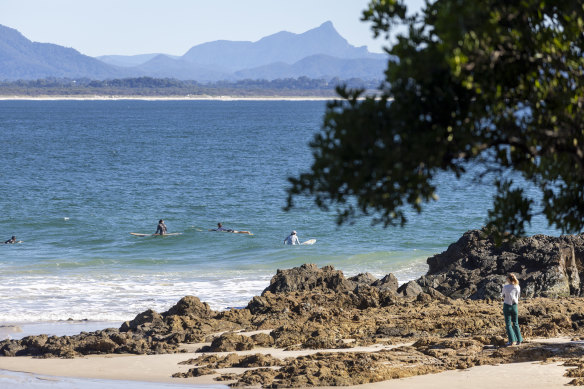This was published 6 months ago
The sea-change towns that have joined the million-dollar club
A string of popular sea- and tree-change areas have joined the $1 million club after median house prices skyrocketed with the onset of the pandemic and lockdowns.
The Byron, Kiama, Wingecarribee and Tweed shires in NSW; the Surf Coast region in Victoria; and Noosa in Queensland have all risen past the $1-million mark over the past five years to June 2024 on Domain data.
These coastal and country areas drew scores of city escapees during the lockdown years, and although their housing markets have stabilised since, property prices remain much higher than five years ago – up between 50 per cent and 85 per cent.
Byron Shire leads the way: its median house price jumped 69.3 per cent to $1,481,000 in the five years to June 2024. In second place is the Kiama area, where the median jumped 76.8 per cent to $1.45 million in the same period.
Next is the Noosa Shire, which jumped an astounding 84.8 per cent to a median of $1.34 million, then Victoria’s Surf Coast Shire, up 58.9 per cent to $1,315,000.
Two more regional NSW areas, Wingecarribee and Tweed, recorded double-digit increases that pushed their medians above the $1 million mark.
Domain chief of research and economics Dr Nicola Powell says the greatest pull to these regions is that they are enduring lifestyle locations “where you would want a holiday home or want to relocate to”.
She says they have become even more attractive due to the rise in remote working and their lower price points compared to major cities.
“With people being able to work hybridly, this makes areas like the Southern Highlands, which are commutable, much more palatable and desirable if you are only having to commute to Sydney a couple of days a week.”
Powell said it’s unlikely the interest in these regions – or their housing prices – will ever drop to pre-pandemic levels, which is proving challenging for locals on the average wage.

Byron house prices are much higher than five years ago.Credit: Danielle Smith
“Locals can be priced out and will move to neighbouring locations in order to find affordable homes, or be forced to stay in the rental market longer,” she says.
Agents say a large proportion of buyers in these sea-change towns are from major cities – some interstate – with overseas buyers represented too.
Noosa real estate agent Tom Offermann says the vast majority of Noosa owners come from towns and cities along the eastern seaboard, and the trend has continued with new buyers.
“Noosa has a strong lifestyle, cultural and climate allure,” he says. “It has the infrastructure and services people in big cities require.”
Pacifico Property’s Christian Sergiacomi says the trends in Byron Bay are similar, and noted locals were realising their property gains and upgrading within the area.
“People are coming from pockets of Sydney, pockets of Melbourne and smaller pockets of Brisbane, as well as Aussies overseas – those who made enquiries in the pandemic but couldn’t do it then are now looking to make the move,” he says.
“Over the past six to eight months there have been a few owners selling one property and buying and moving across to another in the same area.”
Sergiacomi says the spike in interest will continue in the coming months.
“The spring school holiday period will be busy. Generally, that holiday period is quite fierce. The Melbourne people, in particular, come out of a bad winter and want a house here.”
On Victoria’s Surf Coast, Links Property’s Lynne Hayden believes the beaches and quieter pace are what appeal most to buyers.
She says the Surf Coast market is driven by locals, Melburnians and other Victorians. ”The buyers are 50 per cent from the Torquay/Jan Juc area, and the rest are a balance from Melbourne, Bendigo and Ballarat.”
While Hayden describes the current market as “full steam ahead”, she says the rate isn’t the same as during the pandemic.
“It’s not COVID energy but performing better than pre-COVID, with average days on market 70 approximately,” she says.
But this number will see a boost come September. “Post-football finals, we will see a surge.”